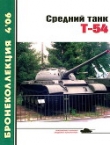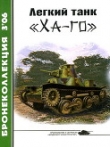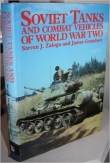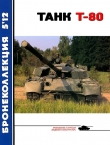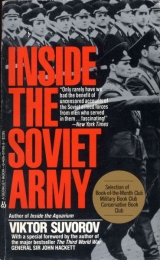
Текст книги "Inside The Soviet Army"
Автор книги: Viktor Suvorov
Жанр:
Публицистика
сообщить о нарушении
Текущая страница: 16 (всего у книги 26 страниц)
Rear Supplies
1
Many Western specialists believe that in order to carry out an operation of the sort described it would be necessary to assemble a massive concentration of material resources and that the Soviet command would encounter extreme difficulty in providing its enormous forces with the supplies they would need. This delusion is based on typical Western concepts of the organisation of the supply and replenishment of military forces.
The Soviet Army has a completely different approach to the problems of supply from that adopted in the West-one which avoids many headaches. Let us start from the fact that a Soviet soldier is not issued with a sleeping bag, and does not need one. He can be left unfed for several days. All that he needs is ammunition and this solves many problems. The problem of supplying Soviet troops in battle is thus confined to the provision of ammunition. We already know that each commander has transport sub-units at his disposal; every regiment has a company which can transport loads of 200 tons, every division a battalion with a capacity of 1,000 tons, every Army a transport regiment, and so forth. All this capacity is used solely to move up ammunition for advancing forces. Each commander allocates a large proportion of this ammunition to the sector which is achieving success-the remainder suffer accordingly.
No less important during a rapid advance is fuel-the life-blood of war. A basic approach has been taken to the problem of fuel-supply. As a condition for its acceptance by the armed Services, every type of Soviet combat vehicle-tanks, armoured personnel carriers, artillery prime movers, etc.-must have sufficient fuel capacity to take it at least 600 kilometres. Thus, Soviet Fronts would be able to make a dash across Western Germany without refuelling. Thereafter, the pipe-laying battalion of each Army would lay a line to the Front's main pipeline which would have been laid by the Front's pipe-laying regiment. The Front's pipelines would be linked with secret underground main lines which had been laid down in Eastern Europe in peacetime. In addition, the C-in-C of a Strategic Direction has under his command a pipe-laying brigade, which can be used to assist the Fronts. At the terminals of the pipelines the pipe-layers set up a number of refuelling centres, each of which can simultaneously refuel a battalion or even a regiment. In addition, the Soviet Army is at present evolving techniques for using helicopters for fuel resupply. Let us take a division which is advancing. One of its tank battalions has stopped, on orders from the divisional commander, and is left behind by the other battalions. In a field by the road, on which the battalion has halted, a V-12 helicopter lands, carrying 40 or more tons of fuel. Within ten minutes it has refuelled all the tanks and taken off again. The battalion sets off for the front again, replacing another which halts to refuel. A single V-12 helicopter flying at low altitude at a speed of 250 kilometres an hour, can refuel a whole division in one day. It is not particularly vulnerable, since it is flying over its own rear areas, which are protected by the Air Defence Troops of the Land Forces. If trucks were used to supply a division hundreds of them would be needed, travelling on damaged, overloaded roads and presenting an excellent target. The destruction of a single bridge could bring them all to a halt. While a single truck carrying ten tons would take twenty-four hours to make a particular journey, a helicopter could do the same job in one hour. Even if helicopters were more vulnerable than endless convoys of trucks, Soviet generals would still use them, for time is far more precious than money during a war.
Provisions, spare parts, etc. are, quite simply, not supplied.
2
Now let us see how this works in practice. A division which is up to full strength, fully equipped, fed and fuelled, with more than 2,000 tons of ammunition, is moving up into action from the second echelon. This division can spend from three to five days in action, without rest for either its soldiers or its officers. The wounded are evacuated to the rear by the medical battalion, after first aid has been given.
Its companies, battalions and regiments waste no time waiting for spare parts for equipment which has been damaged. They simply throw it aside. The repair and refitting battalion mends whatever it can, cannibalising one tank to repair two or three others, removing its engine, tracks, turret and anything else which is needed. Any piece of equipment which is seriously damaged is left for removal to the rear by the Army's or the Front's mobile tank repair workshop.
In action, the division fights with great determination, but its numbers dwindle. Some of its fighting equipment is returned after repair, but not a great deal. After three to five days of hard fighting, the survivors are sent back to the second echelon, their place being taken by a fresh division which has been well fed and fully rested. From the remnants of the old division, a new one is quickly put together. Combat equipment is provided by the tank repair workshops. The fact that it belonged to some other division only the day before is immaterial. Reinforcements reach the new division from the hospitals-whether these soldiers and officers formerly belonged to other divisions, Armies or Fronts is also immaterial. With them arrive equipment from the factories and reservists-some of whom are older, others still very young boys. The division shakes down, exercises and allows its soldiers to get all the sleep they need. Then, after five days, it moves up into action, fully fed and fuelled, with 2,000 tons of ammunition.
Often, while it is reforming, a division receives entirely new equipment, straight from the factory, but it may also be issued with older material taken from store, while its own, or what remains of it, is taken from it for some other division which is also re-forming, not far away.
Frequently, after a particularly punishing series of battles, a division cannot be re-formed. In this event all its commanders from company level upwards are withdrawn and what is left of the division is administered by the deputies to the battalion and regimental commanders and by the deputy divisional commander. This remnant will continue to fight, to the last man, while the divisional commander and his subordinates are in the rear, receiving new equipment and new soldiers. Within a short period of time they return to the battle in which what was left of their former division perished so recently.
One most important element needed for the rebuilding of a new division is its old colours. A fresh division can be set up very quickly around the old colours. But if the colours are lost-that is the end of the division. If such a thing should happen, all its former commanders are sent to penal battalions, where they expiate their guilt with blood, while their division is disbanded and used to bring others up to strength.
Here is an example from the history of the 24th Samara-Ulyanovsk Iron Division, with which I entered Czechoslovakia in 1968.
The division was established in 1918 and was one of the best in the Red Army. Lenin corresponded personally with some of its soldiers. It was active in the war against Germany from the very beginning of hostilities and distinguished itself in the fighting near Minsk until, as part of the 13th Army, it found itself encircled. Part of the division managed to break out but its colours were lost. Despite its past achievements, the division was disbanded and its various officers were tried by military tribunals. In 1944, when the Red Army once again reached and then crossed the Soviet frontiers, a special commission began questioning local inhabitants in an attempt to discover where Soviet officers and soldiers who had been killed in action during the first days of the war were buried. A peasant, D. N. Tyapin, told the commission how he had found the body of a Soviet officer, wrapped in a flag, and how he had buried the body, with the flag. The grave was immediately opened and the colours of the 24th Iron Division were found. The flag was immediately sent away for restoration and, just as quickly, a new division was formed and given the old colours, the battle honours and the title of the old division. Today the 24th Iron Division is one of the most famous in the Soviet Army. However, despite the fact that it distinguished itself in the battle which ended the war, it was never made a Guards division. It was not forgiven for the loss of its colours.
PART SIX
EQUIPMENT
What Sort of Weapons?
1
I adore weapons. Of every sort. I love military equipment and military uniforms. One day I shall open a small museum, and the first exhibit which I shall buy for my museum will be an American jeep. This is a real miracle weapon. It was designed before the Second World War and it served from the first day to the last, like a faithful soldier. It was dropped by parachute, it was soaked in salt water, it smashed its wheels on the stony deserts of Libya and sank into swamps on tropical islands. It served honourably in the mountains of Norway and of the Caucasus, in the Alps and the Ardennes. And, since the war, can any other military vehicle have seen so many battles-Korea, Vietnam, Sinai, Africa, the Arctic, South America, Indonesia, India, Pakistan? And is there any sort of weapon which has not been installed on a jeep? Recoilless guns, anti-tank rockets, machine guns. And it has worked on reconnaissance duties, as an ambulance, a patrol vehicle, a commander and an ordinary military workhorse.
And how many types of tanks, guns, aircraft, rockets have come and gone in the time of the jeep? They were important and impressive, the jeep was grey and undistinguished. But they have gone and the jeep is still there. And how many times have they tried to replace the jeep? But it is indispensable. In the desert, more reliable than a camel, in the grasslands faster than a leopard, in the Arctic hardier than a Polar bear.
Another exhibit in my museum will be a Kalashnikov automatic assault rifle. Not one of those the terrorists used to kill the Olympic athletes or the one I had with me in Czechoslovakia or one of those the Communists killed doctors with in Cambodia. No, it will be one of the thousands captured by the American marines in Vietnam and used in their desperate attempt to halt Communism and to avert the calamity which threatened the Vietnamese people.
American soldiers in Vietnam often mistrusted their own weapons and preferred to use their Kalashnikov trophies. This was not so simple, for they could hardly expect to be supplied with the proper rounds for these weapons but they used them nevertheless, capturing more ammunition as they fought. What is the secret of the Kalashnikov? It is uncomplicated and reliable, like a comrade-in-arms, and these are the two qualities of greatest importance in a battle.
2
My museum will have weapons from everywhere-from Germany and Britain, France and Japan. But the greatest number will come from the Soviet Union. I hate the Communists, but I love Soviet weapons. The fact is that Soviet designers realised, decades ago, the simple truth that only uncomplicated and reliable equipment can be successful in war. This is as true as the fact that the only plans which will succeed are those which are simple and easily understood and that the best battledress is the simplest and most hard wearing.
Soviet requirements from a weapon are that it must be easy to produce and simple in construction, which makes it easier to teach soldiers to use it and simpler to maintain and repair.
Although the Soviet Union produced the same amount of steel as Germany, it built a much greater number of tanks. Moreover, because of the simplicity of their construction, it proved possible to repair tens of thousands of these tanks and to return them to battle two or even three times.
General Guderian admired Soviet tanks and wrote about them, enthusiastically and at length. He was insistent in urging that Germany should copy the T-34. The design of this Soviet tank was taken as a basis for the `Panzer' and shortly afterwards for the `Tiger-König'. But the German designers were unable to meet the most important requirement-simplicity of construction. As a result only 4,815 Panzer tanks were built in all, while no more than 484 `Tiger-König' tanks were ever produced. In the same period the Soviet Union built 102,000 tanks, 70,000 of which were T-34s.
In considering these figures it should be remembered that, while most German tank factories were subjected to bombing, many Soviet factories were lost altogether-the Kharkov plant was captured by the Germans in the first months of the war, and this was the largest Soviet factory and the birthplace of the T-34; the Stalingrad tank factory was the setting for the fiercest fighting it is possible to imagine. Leningrad was besieged, but, despite being without steel or coal, the tank factory there, which was subjected to constant artillery bombardment, continued to repair tanks for three years. On some occasions tanks which still were under repair had to be used to fire through gaps in the walls at advancing groups of German soldiers. The only factory that was left was in the Urals and it was to this that the machinery was taken and set up, virtually in the open air, to produce the world's simplest and most reliable tank.
It should not be thought that Soviet equipment suffers any harmful effects because of its simplicity of design. Quite the reverse. In its time, the T-34 was not only the simplest but also the most powerful tank in the world.
3
When a MIG-25 landed in Japan, the Western experts who examined it marvelled at the simplicity of its design. Naturally, for propaganda purposes, the fighting qualities of this excellent aircraft were disparaged. One not particularly perceptive specialist even commented, `We had thought it was made of titanium but it turns out to be nothing but steel. It is, in fact, impossible to reach the speeds of which the MIG-25 is capable using titanium: yet the Soviet designers had managed to build this, the fastest combat aircraft in the world, from ordinary steel.
This is a most significant fact. It means that this remarkable aircraft can be built without especially complicated machine tools or the help of highly skilled specialists, and that its mass-production in wartime would be unaffected by shortages of important materials. Furthermore, this aircraft is exceedingly cheap to produce and could therefore be built in very great numbers if this were necessary. This is its most important characteristic; the fact that for two decades it has been the fastest interceptor aircraft in the world, with the highest rate of climb, is of secondary significance.
4
Technology is developing and each year equipment becomes more and more complex. But this does not conflict with the overall philosophy of Soviet designers. Of course, decades ago, their predecessors used the latest equipment available in their combat vehicles and aircraft and this equipment must then have been considered very complex. But the iron, unbreakable principle observed by Soviet designers retains its force. Whenever a new piece of equipment is being developed, making the use of highly complex tools and techniques unavoidable, there is always a choice of hundreds, even thousands of possible technical procedures. The designers will always select the very simplest possible of all the choices open to them. It would, of course, be feasible to produce an automatic transmission system for a jeep, but it is possible to get by with an ordinary one. This being so, there can be only one Soviet choice-the ordinary transmission.
I once saw a film comparing a Soviet and an American tank. A driver was given both models to drive and he was then asked-`Which is the better? The American one, of course, said the driver. `It has automatic transmission, whereas in the Soviet tank you have to change gear, which is not easy in a heavy machine. He was quite right-if you see war as a pleasant outing. But Soviet designers realise that any future war will be anything but this. They consider, quite correctly, that, if there are mass bombing attacks, if whole industrial areas are destroyed, if long-distance communications break down, mass production of tanks with automatic transmission would be out of the question. Equally it would be impossible to repair or service tanks of this sort which had been produced before the war. Accordingly, there can be only one choice-the ordinary, non-automatic transmission. This may be hard on the tank driver-he will get tired. But it will be easier for industry and for the whole country, which will continue to produce tanks by the ten thousand on machines which have been set up virtually in the open air.
5
The simplicity of Soviet weapons surprises everyone. But each type of equipment which is produced is turned out in two variants-the normal one and the `monkey-model'.
The `monkey-model' is a weapon which has been simplified in every conceivable way and which is intended for production in wartime only.
For instance, the T-62 tank is one of the simplest fighting vehicles in the world. But as it was being designed, a still simpler version was also being developed, for wartime use. The `monkey-model' of the T-62 does not have a stabilised gun, carries simplified radio and optical equipment, the night-vision equipment uses an infra-red light source to illuminate targets (a method which is twenty years old), the gun is raised and turned manually, steel rather than wolfram or uranium is used for the armour-plating piercing caps of its shells.
Soviet generals consider, justifiably, that it is better to have tanks like these in a war than none at all. It is intended that the `monkey-model' approach will be used not only for building tanks, but for all other sorts of equipment-rockets, guns, aircraft, radio sets, etc. In peacetime these variants are turned out in large quantities, but they are only issued to countries friendly to the Soviet Union. I have seen two variants of the BMP-1 infantry combat vehicle-one which is issued to the Soviet army and another which is intended for the Soviet Union's Arab friends. I counted sixty-three simplifications which made the second `monkey-model' different from the original version. Among the most important of these were: The 73mm gun has no loading or round selection equipment. Whereas in the Soviet version the gunnerjust presses the appropriate buttons and the round which he requires slides into the barrel, in the simplified model all of this has to be done by hand, and furthermore, the gun is not stabilised. The turret is rotated and the gun is raised mechanically. In the Soviet version this is done electrically-the mechanical system is there only as a back-up. The `export' version is armed with the Malyutka rocket, the Soviet one with the `Malyutka-M', which differs from the other model in having an automatic target guidance system. The `monkey-model' is without the lead internal lining on the walls, which protects the crew against penetrating radiation and against flying fragments of armour in the event of a direct hit. The optical system is greatly simplified, as is the communications equipment, there is no automatic radiation or gas detector, there is neither an automatic hermetic sealing system nor an air filtration system, for use in conditions of very heavy contamination, no automatic topographical fixation system is fitted and many other systems are missing.
When one of these `monkey-models' fell into the hands of Western specialists, they naturally gained a completely false impression of the true combat capabilities of the BMP-1 and of Soviet tanks. For what they were looking at was no more than a casing, or a container, like an empty money box which is of no value without its contents.
The Soviet Union is currently making deliveries abroad of T-72 tanks, MIG-23 fighters and TU-22 bombers. But these are different from the models with which the Soviet Army has armed itself. When one of a man's pockets contains banknotes and the other simply holds pieces of paper, it is quite impossible to tell which is which from the outside.
The current Soviet policy concerning equipment is a wise one-to amass first-class but very simple equipment in quantities sufficient for the first few weeks of a war. If the war continues, equipment will be produced on an enormous scale, but in variants which have been simplified to the greatest possible extent. Experience of producing both standard and `monkey' models is being gained in peacetime; the simpler variants are being sold to the `brothers' and `friends' of the USSR as the very latest equipment available.

